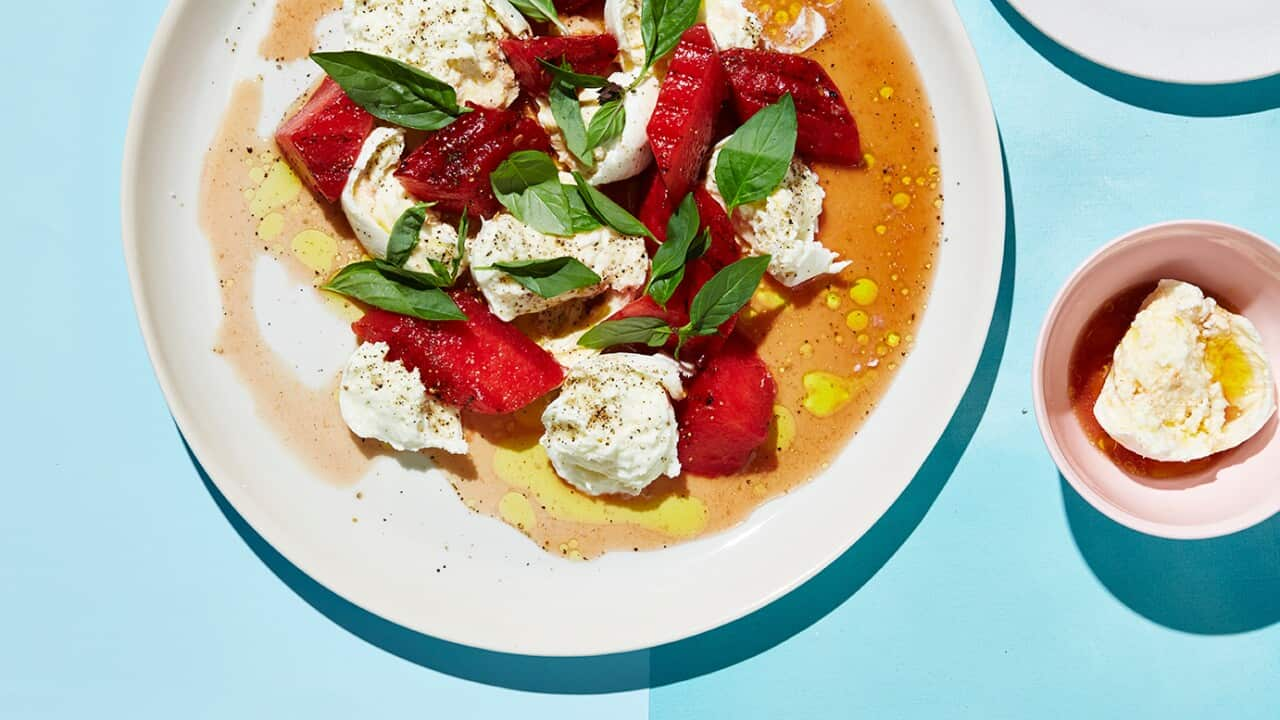I was nine-years-old when the Iron Curtain started to fall from Czechoslovakia in 1989.
I was living in Slovakia at the time (now known as the Slovak Republic) in a small town located about 10 kilometres from the capital city of Bratislava.
Up until that point, my family and I lived under the USSR’s communist rule. So for the first part of my life, we didn’t have a lot of supplies or a choice of western foods.
But at Christmas, we celebrated by eating a few more modest food courses than usual from our table.
Across Slovakia [and other parts of Eastern Europe], fish has always been served as the main course for Christmas Eve dinner so we ate carp. In Australia, carp is considered a pest and most people don’t like to eat it. But local carp was all we had access to at the time.
As a child, I remember seeing huge wooden barrels filled with hundreds of carp and thought it was very exciting.
Memories of carp in our bathtub
My parents used to go to the local markets a few days before Christmas Eve to source the fish. As a child, I remember seeing huge wooden barrels filled with hundreds of carp and thought it was very exciting.
We would come back home with a net-bag filled with one or two live carp. We’d put the fish in the bathtub filled with water. That’s where they would live until it was time to prepare them for dinner on Christmas Eve.
Why did we keep the fish in our bathtub? Although I didn’t understand it at the time, looking back I think it was because we only had a small fridge (and not many people even had fridges back then so it became the tradition). Carp is also known to be a bottom feeder of the fish world and a muddy tasting fish. So by keeping carp in the bathtub for a few days and by regularly changing the water, it was thought that you could slowly cleanse the fish of its muddy flavour. When Christmas Eve arrived, carp was one of the first things we prepped in anticipation of dinner. This was the tradition in a few other countries across Eastern Europe as well.
When Christmas Eve arrived, carp was one of the first things we prepped in anticipation of dinner. This was the tradition in a few other countries across Eastern Europe as well.

Christmas at nannas, 1986: Zuzana Kovacicova (front, far right) eats carp and potato salad for Christmas Eve dinner. Source: Supplied
The day went like this. My father would slaughter the fish in the morning. Then, he’d slice it – not lengthwise – but in a horseshoe shape to keep bring good fortune. Some families would also take a fish scale from the carp and place it under their tablecloth or position it on the Christmas dinner table for good luck.
The next step required the fish to be marinated in milk (to draw out any residual muddy flavour) until around 4pm. Finally, the horseshoe-shaped fish would be crumbed and fried, just like a schnitzel.
Christmas food traditions, like eating fish or turkey for Christmas, can help us to find a sense of security and warmth in a messy world.
Dinner time was usually 5 or 6pm. We’d first eat a selection of starters – thin wafers topped with honey and minced garlic, small bread dumplings and soup with smoked sausage. Carp would then be served warm for dinner with a side of potato salad made with pickles, mayonnaise, carrots and peas. Desert would always feature cakes.
Although I loved Christmas, I don't remember loving or hating carp as a child. But what I do recall was my dislike of the bones. It would take me hours to eat the fish because every single little piece had a bone in it.
After the ‘Velvet Revolution’ happened in 1989 – which saw the end of one-party rule – different food options opened up to us. Suddenly, we could buy frozen, boneless fish fillets. So, as a child, I was keen to progress from carp to minced fish meat (because I hated the bones). But my parents still ate carp for Christmas – it’s a tradition they have kept going to this very day.
Fish dinner traditions continue
Although I haven’t eaten carp for many years, I have stuck with the Slovakian tradition of eating fish for Christmas Eve dinner (we usually have ling fillets) and all the trimmings.
It is really nice to keep food traditions going, no matter what fish we choose to eat. I believe traditions are what make us.
I also feel that as adults, traditions do for us what a routine does for a young child – they keep us feeling certain in uncertain times.
Christmas Eve dinner is a strong part of food keeping seasonal traditions alive. Christmas food traditions, like eating fish or turkey for Christmas, can help us to find a sense of security and warmth in a messy world. That’s why, to me, Christmas is one of the most beautiful days of the year.
I’m really looking forward to having a traditional Christmas Eve dinner this year. I know it will bring me a sense of nostalgia and peace.







